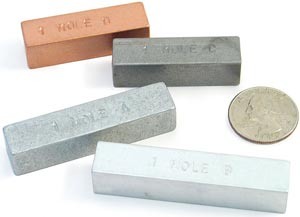December 6, 2016
 If a picture is worth 1,000 words, a video is surely worth a few million. Especially when it comes to scientific explanations, a video is a wonderful tool for conveying information to your students in a visual, easy-to-follow manner.
If a picture is worth 1,000 words, a video is surely worth a few million. Especially when it comes to scientific explanations, a video is a wonderful tool for conveying information to your students in a visual, easy-to-follow manner.
The videos below offer you and your students a glimpse into the world of hydrophilic polymers—where they are today, what new discoveries we’ve made, and where we are headed in the future.
Enjoy! If you find a video on hydrophilic polymers that you’d like to share with us, please leave a comment!
— Read the rest of this entry »
 Leave a Comment » |
Leave a Comment » |  Chemistry, College level, Elementary level, High School level, Middle School level | Tagged: Chemistry, Educational Innovations, green science, hands-on activity, homeschool, hydrophilic, instant snow, parent friendly, PBL, phenomenon based learning, phenomenon-based science, polymer, polymer crystals, polymers, science, snow polymer, sodium polyacrylate |
Chemistry, College level, Elementary level, High School level, Middle School level | Tagged: Chemistry, Educational Innovations, green science, hands-on activity, homeschool, hydrophilic, instant snow, parent friendly, PBL, phenomenon based learning, phenomenon-based science, polymer, polymer crystals, polymers, science, snow polymer, sodium polyacrylate |  Permalink
Permalink
 Posted by Donna Giachetti
Posted by Donna Giachetti
December 6, 2016

Superabsorbent hydrophilic polymers are everywhere—often, in places we’d never suspect. Researchers continue to discover new uses for these handy materials: in concrete, in stainless steel coatings, medical devices, and many other industrial applications. Truly, they are one of the most fascinating areas of chemical research today.
We have collected below a sampling of news articles about recent developments in the field of SAPs in the hopes that these will inspire conversations with your students about the practical uses of hydrophilic substances. If you come across an article of interest, please share it with us in the Comments section below.
Happy reading!
Read the rest of this entry »
 Leave a Comment » |
Leave a Comment » |  Chemistry, College level, Elementary level, High School level, Middle School level | Tagged: Chemistry, Educational Innovations, green science, homeschool, hydrophilic, instant snow, parent friendly, PBL, phenomenon based learning, phenomenon-based science, polymer, polymer crystals, science, snow polymer, sodium polyacrylate, variables |
Chemistry, College level, Elementary level, High School level, Middle School level | Tagged: Chemistry, Educational Innovations, green science, homeschool, hydrophilic, instant snow, parent friendly, PBL, phenomenon based learning, phenomenon-based science, polymer, polymer crystals, science, snow polymer, sodium polyacrylate, variables |  Permalink
Permalink
 Posted by Donna Giachetti
Posted by Donna Giachetti
December 6, 2016
 Your students may already be aware of some ways that hydrophilic polymers are used in our daily lives. For instance, Sodium Polyacrylate is an essential component of disposable diapers, and Growing Spheres are often used by florists as a soil-free way to store water and keep cut flowers fresh for a long time.
Your students may already be aware of some ways that hydrophilic polymers are used in our daily lives. For instance, Sodium Polyacrylate is an essential component of disposable diapers, and Growing Spheres are often used by florists as a soil-free way to store water and keep cut flowers fresh for a long time.
But what else can hydrophilic polymers do? The answer is, plenty!
 Leave a Comment » |
Leave a Comment » |  Chemistry, College level, Elementary level, High School level, Middle School level | Tagged: Chemistry, DIY, Educational Innovations, experiments, fun experiments, green science, hands-on activity, homeschool, hydrophilic, instant snow, parent friendly, PBL, phenomenon based learning, phenomenon-based science, polymer, polymer crystals, science, snow polymer, sodium polyacrylate, variables |
Chemistry, College level, Elementary level, High School level, Middle School level | Tagged: Chemistry, DIY, Educational Innovations, experiments, fun experiments, green science, hands-on activity, homeschool, hydrophilic, instant snow, parent friendly, PBL, phenomenon based learning, phenomenon-based science, polymer, polymer crystals, science, snow polymer, sodium polyacrylate, variables |  Permalink
Permalink
 Posted by Donna Giachetti
Posted by Donna Giachetti
December 6, 2016
 What do artificial snow and baby diapers have in common? Some folks may scratch their heads, but if you’re a science teacher you probably already know the answer(s): they both contain sodium polyacrylate, and they both fall into the fascinating category of SAPs—superabsorbent polymers. These polymers simply LOVE water!
What do artificial snow and baby diapers have in common? Some folks may scratch their heads, but if you’re a science teacher you probably already know the answer(s): they both contain sodium polyacrylate, and they both fall into the fascinating category of SAPs—superabsorbent polymers. These polymers simply LOVE water!
This edition of our newsletter is all about hydrophilic, or water loving, materials. We’re proud to share these comments from science loving teachers!
Read the rest of this entry »
 Leave a Comment » |
Leave a Comment » |  Chemistry, College level, Elementary level, High School level, Middle School level | Tagged: Chemistry, DIY, Educational Innovations, fun experiments, hands-on activity, hydrophilic, parent friendly, PBL, phenomenon based learning, phenomenon-based science, polymer, polymer crystals, science, snow polymer, sodium polyacrylate, variables |
Chemistry, College level, Elementary level, High School level, Middle School level | Tagged: Chemistry, DIY, Educational Innovations, fun experiments, hands-on activity, hydrophilic, parent friendly, PBL, phenomenon based learning, phenomenon-based science, polymer, polymer crystals, science, snow polymer, sodium polyacrylate, variables |  Permalink
Permalink
 Posted by Donna Giachetti
Posted by Donna Giachetti
September 3, 2011
 by: Dr. Jean Oostens
by: Dr. Jean Oostens
Atoms were proposed in antiquity without any experimental evidence by Democritus, a Philosopher. This must have been a problem for Newton and Leibnitz who posited that there was always a mean of considering smaller and smaller intervals of space to calculate the “instantaneous velocity”.
The introduction of the precision balance in chemistry by Lavoisier paved the way for Dalton to formulate his laws on the “definite and multiple proportions” governing chemical reactions. This supported the atomic theory, without giving it general acceptance.
Specific heat was defined as the quantity of heat needed to increase one gram of a substance by one degree. There was no definite pattern when specific heats of various substances were compared. Until two French scientists in 1819 calculated specific heat by atomic mass, forming the Law of Dulong and Petit. There appeared a number of cases where the results were quite similar: about 6 calorie per mole. This was equivalent to stating that any atom is as good as any other to store heat! This was a small step towards acceptance of the existence of atoms. An explanation for this, and the reason for the exceptions, had to wait the early 20th century explanation by Albert Einstein. By that time, atoms had gained wide acceptance from the work of Rutherford, and soon by Bohr.
Lesson on the Law of Dulong and Petit:
 You are given several chunks of metal, each containing 0.6 * 1024 atoms (i.e. one mole) of one element. How will each of those samples, when dropped in a standard quantity of hot water (typically 200 mL and 70 C) affect the temperature?
You are given several chunks of metal, each containing 0.6 * 1024 atoms (i.e. one mole) of one element. How will each of those samples, when dropped in a standard quantity of hot water (typically 200 mL and 70 C) affect the temperature?
Step 1. Use a good balance (at least 0.1 gm resolution) to determine which element you are dealing with. If possible confirm your identification with an additional cue. Read the rest of this entry »
 1 Comment |
1 Comment |  Chemistry, College level, experiments, High School level, Physics | Tagged: Chemistry, Dulong and Petit Law, metals, mole, specific heat |
Chemistry, College level, experiments, High School level, Physics | Tagged: Chemistry, Dulong and Petit Law, metals, mole, specific heat |  Permalink
Permalink
 Posted by Tami O'Connor
Posted by Tami O'Connor
 If a picture is worth 1,000 words, a video is surely worth a few million. Especially when it comes to scientific explanations, a video is a wonderful tool for conveying information to your students in a visual, easy-to-follow manner.
If a picture is worth 1,000 words, a video is surely worth a few million. Especially when it comes to scientific explanations, a video is a wonderful tool for conveying information to your students in a visual, easy-to-follow manner.


 Posted by Donna Giachetti
Posted by Donna Giachetti 
 Your students may already be aware of some ways that hydrophilic polymers are used in our daily lives. For instance,
Your students may already be aware of some ways that hydrophilic polymers are used in our daily lives. For instance,  What do artificial snow and baby diapers have in common? Some folks may scratch their heads, but if you’re a science teacher you probably already know the answer(s): they both contain sodium polyacrylate, and they both fall into the fascinating category of SAPs—superabsorbent polymers. These polymers simply LOVE water!
What do artificial snow and baby diapers have in common? Some folks may scratch their heads, but if you’re a science teacher you probably already know the answer(s): they both contain sodium polyacrylate, and they both fall into the fascinating category of SAPs—superabsorbent polymers. These polymers simply LOVE water!
